Characterization and Remediation of Contaminated Groundwater in Fractured Rock with U.S. EPA & USGS
Sponsored by: US EPA and USGS
Archived: Thursday, September 12, 2019
Thermal Remediation in Fractured Rock - A Case Study and What to Look for in a Work Plan
Contaminated groundwater in fractured rock at Superfund sites poses unique challenges due to the geologically complex nature of such sites. Technological advances have led to the development of tools that aid in gaining a more robust understanding of contaminated fractured rock systems. The Technology Innovation and Field Services Division (TIFSD) in EPA Headquarters has collaborated with the U.S. Geological Survey (USGS) to develop an EPA-specific training course that provides a state-of-the-practice overview of the characterization and remediation of contaminated groundwater in fractured rock. This training course that will improve national consistency for these complex sites and drive the development of effective characterization and remediation techniques required for their restoration.
The USGS has collaborated with EPA to develop a training course specific to EPA Region 10 (Pacific Northwest) that will highlight information requirements for characterizing the spatial distribution and fate of chlorinated solvents and their degradation products in complex fractured rock environments. The USGS has developed several workshops/training sessions for EPA in the past and these previous efforts provide the foundation for this current effort. EPA HQ and Region 10 personnel have worked closely with the USGS to ensure that Superfund specific content is included throughout the course sessions.
The two-day workshop will take place on September 11-12, 2019, at the Region 10 Office in Seattle, WA and is available to remote viewers via CLUIN.
Day 1: Fractured Rock 101: Focus on Characterization
The first day of the course will provide an overview of groundwater flow and contaminant transport processes in fractured rock environments. The focus will be on field characterization of fractured bedrock. Topics will include characterization of the hydrogeology, contaminant distribution, and transport processes and pathways in the fractured bedrock. Case studies of Region 10 (Pacific Northwest) sites will be highlighted to illustrate the characterization of groundwater contamination in fractured rock systems.
Day 2: Fractured Rock 102: Focus on Remediation
The second day of the course will focus on remediation of groundwater contamination in fractured rock systems. Case studies will illustrate multiple remedial approaches for cleaning up contamination in fractured rock systems.
Presenters will include USGS, EPA, Oregon DEQ, and industry representatives.
Accessibility, Recording, and Content Disclaimer
Rehabilitation Act Notice for Reasonable Accommodation
It is EPA's policy to make reasonable accommodation to persons with disabilities wishing to participate in the agency's programs and activities, pursuant to the Rehabilitation Act of 1973, 29 U.S.C. 791. Any request for accommodation should be made to Cindy Frickle at 703-603-8763 or frickle.cynthia@epa.gov, preferably one week or more in advance of the webinar, so that EPA will have sufficient time to process the request. EPA would welcome specific recommendations from requestors specifying the nature or type of accommodation needed. Please note that CLU-IN provides both alternate phone call-in options and closed captioning for all webinars, and requests for these specific accommodations are not necessary.
Webinar Recording
By participating in this CLU-IN webinar, you automatically agree to authorize recording of audio and visual content presented during this live event and consent to subsequent use of this recording in the public domain by the U.S. Environmental Protection Agency. This recording may include questions, comments and poll responses provided by you during the live event in addition to your name, voice, image or likeness. This recording will be made available after the conclusion of the live event as part of the CLU-IN webinar archives, and will remain available indefinitely. If you do not wish to consent to the recording, please do not join the live event, and contact Jean Balent at 202-566-0832 or balent.jean@epa.gov to discuss your concerns.
Content Disclaimer
This webinar is intended solely to provide information to the public. The views and opinions expressed as part of this webinar do not necessarily state or reflect those of the U.S. Environmental Protection Agency. It is not intended, nor can it be relied upon, to create any rights enforceable by any party in litigation with the United States, or to endorse the use of products or services provided by specific vendors. With respect to this webinar, neither the United States Government nor any of their employees, makes any warranty, express or implied, including the warranties of merchantability and fitness for a particular purpose, or assumes any legal liability or responsibility for the accuracy, completeness, or usefulness of any information, apparatus, product, or process disclosed, or represents that its use would not infringe privately owned rights.
Presenters:
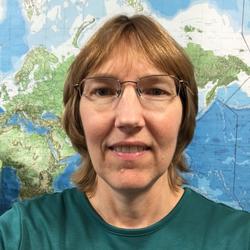 Claire Tiedeman, U.S. Geological Survey (tiedeman@usgs.gov or 650-439-2583)
Claire Tiedeman, U.S. Geological Survey (tiedeman@usgs.gov or 650-439-2583)
Claire Tiedeman has been a research hydrologist with the USGS since 1992. Her research is focused on developing and applying methods for characterizing and modeling groundwater flow and chemical transport in fractured rocks. This work has included field studies in crystalline rocks of New Hampshire and in sedimentary rocks of New Jersey at the former Naval Air Warfare Center (NAWC) site. She was co-coordinator of USGS research on contaminant fate, transport, and remediation at the NAWC site from 2005-2018. Claire's research has also addressed calibration and uncertainty analysis for models of complex groundwater flow systems, and she co-authored the textbook Effective Groundwater Model Calibration: With Analysis of Data, Sensitivities, Predictions, and Uncertainty (Hill and Tiedeman, 2007, John Wiley and Sons).
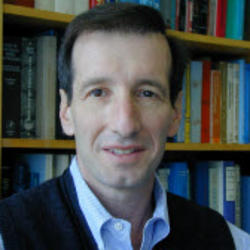 Allen Shapiro, U.S. Geological Survey (ashapiro@usgs.gov or 703-648-5884)
Allen Shapiro, U.S. Geological Survey (ashapiro@usgs.gov or 703-648-5884)
Dr. Allen Shapiro is a Senior Research Hydrologist with the U.S. Geological Survey (USGS). He is a member of the Water Cycle Branch in the Earth System Processes Division (ESPD) of the Water Mission Area (WMA). Dr. Shapiro conducts research on groundwater flow and chemical transport in complex geologic environments, including fractured rock and karst aquifers. Dr. Shapiro's research has focused on the development of field techniques and equipment, modeling groundwater flow and chemical transport, and methods of integrating and interpreting geologic, geophysical, hydraulic, and geochemical information in characterizing fractured rock aquifers. Dr. Shapiro is also actively pursuing research in the characterization and remediation of various contaminants in fractured rock, including chlorinated solvents and other Dense Non-Aqueous Phase Liquids. He is a graduate of Princeton University with a Ph.D. in Civil and Geological Engineering. He has been an Adjunct Professor in the Department of Earth and Environmental Sciences at Columbia University. Dr. Shapiro is a Fellow of the Geological Society of America, and in 2004, the National Ground Water Association selected him as the Distinguished Darcy Lecturer, Dr. Shapiro has also served on National Research Council panels that have produced extensive reports on key engineering and scientific issues facing the Nation.
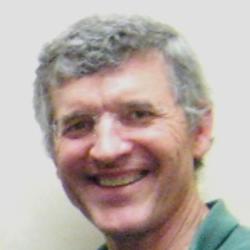 Dan Goode, U.S. Geological Survey (djgoode@usgs.gov or 609-406-3812)
Dan Goode, U.S. Geological Survey (djgoode@usgs.gov or 609-406-3812)
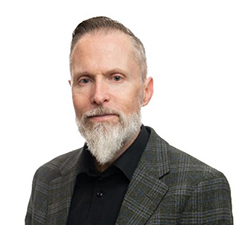 Fred Day-Lewis, Pacific Northwest National Laboratory (frederick.day-lewis@pnnl.gov)
Fred Day-Lewis, Pacific Northwest National Laboratory (frederick.day-lewis@pnnl.gov)
Fred Day-Lewis joined PNNL in 2021 as a Chief Geophysicist and Lab Fellow in the Environmental Subsurface Science Group within the Earth Systems Science Division. Prior to starting at PNNL, Fred worked for the U.S. Geological Survey for 18 years as a Research Hydrologist. Fred has worked on a variety of applied-research projects related to subsurface characterization and monitoring, groundwater remediation, groundwater/surface-water exchange, geophysical inverse problems, thermal methods, and hydrologic parameter estimation. Fred currently serves as an associate editor for the journal Groundwater. He previously served as an associate editor for Water Resources Research, Geosphere, and Hydrogeology Journal. Fred is a past president of the American Geophysical Union Near Surface Geophysics Section. He was elected Fellow of the Geological Society of America in 2015 for seminal contributions to hydrogeophysics. He is a 2023 recipient of the Harold Mooney Award from the Society of Exploration Geophysicists for contributions to the near-surface geophysics community. He received a PhD from Stanford University and BA and BS from the University of New Hampshire.
Ted Repasky, U.S. EPA Region 10 (Repasky.ted@epa.gov or 206-553-0039)
Tim Maley, U.S. EPA Region 10 (Maley.timothy@epa.gov or 206-553-1210)
Don Clabaugh, U.S. EPA Region 10 (Clabaugh.charles@epa.gov or 206-553-0682)
Henning Larsen, Oregon DEQ (LARSEN.Henning@deq.state.or.us or 503-229-5527)
Terry Tolan, INTERA (TTolan@intera.com)
Charles E. Schaefer, CDM Smith Inc. (schaeferce@cdmsmith.com)
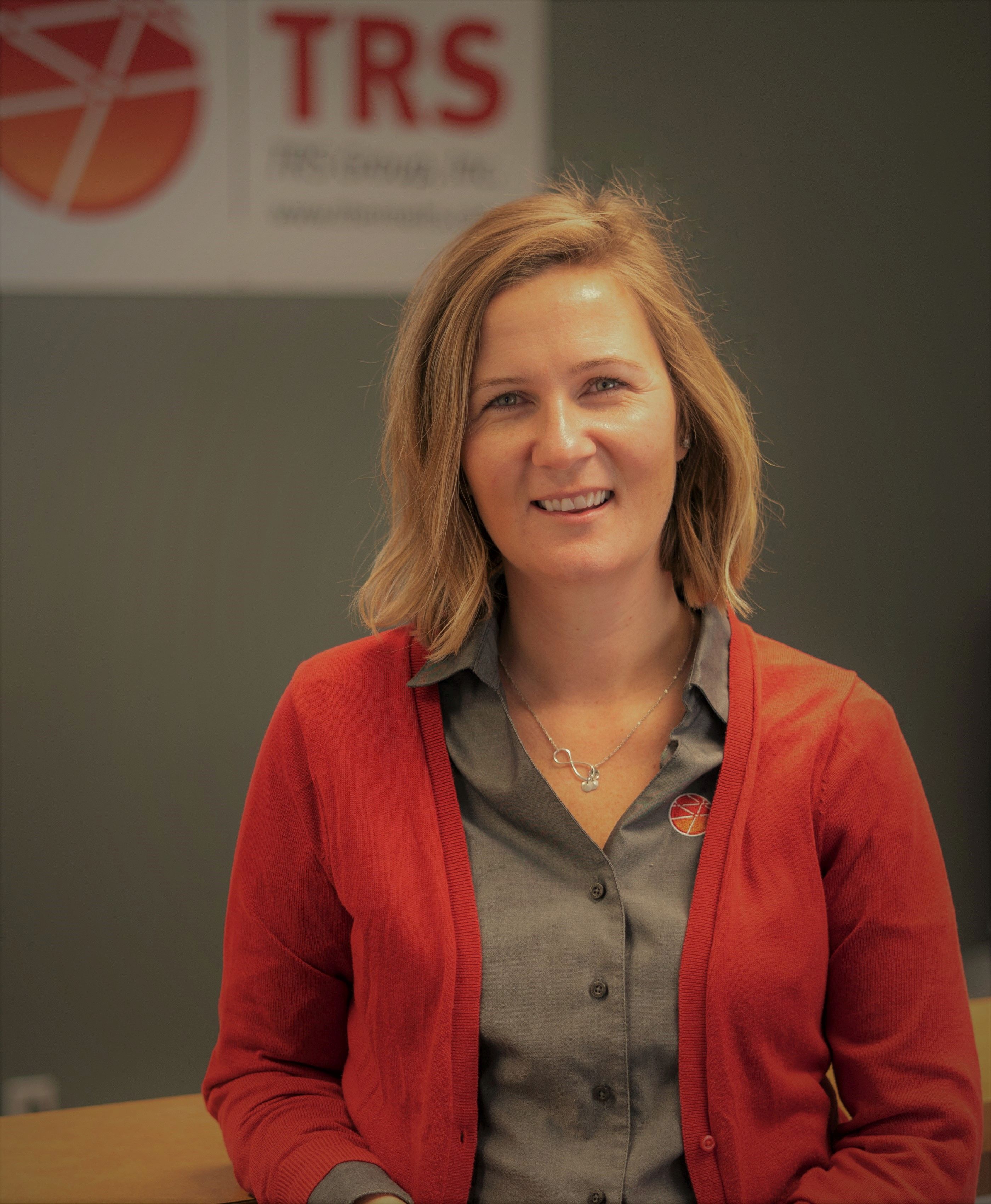 Lauren Soos, TRS Group. Inc. (lsoos@thermalrs.com)
Lauren Soos, TRS Group. Inc. (lsoos@thermalrs.com)
Lauren has over 17 years of experience in the environmental consulting and remediation industries, focusing on soil and groundwater remediation. Over 10 years ago, as an environmental engineering consultant, Lauren was exposed to the fast-paced implementation and certainty of in situ thermal remediation (ISTR) and became obsessed with the technology. Shortly after, Lauren joined TRS Group (TRS) and has been directly involved with over a dozen of ISTR projects throughout the United States. As an engineer and manager in the TRS operations and technical sales teams, she oversees ISTR design, implementation, and operations. Lauren lives in New Hampshire with her husband, Seth, and daughters, Emma and Isla. Their favorite family activity is skiing, which they think is pretty awesomesauce, an adjective their youngest daughter uses to describe these recent adventures.
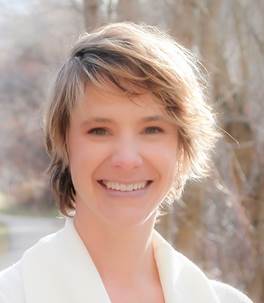 Tamzen W. Macbeth, CDM Smith Inc. (macbethtw@cdmsmith.com)
Tamzen W. Macbeth, CDM Smith Inc. (macbethtw@cdmsmith.com)
Tamzen Macbeth is a Vice President at CDM Smith out of Helena, Montana. She has worked for CDM since 2009. Previously, she worked for 7 years at North Wind Inc. Tamzen is an environmental engineer with an interdisciplinary academic and research background in microbiology and engineering. She specializes in the development, demonstration and application of innovative, cost-effective technologies for contaminated groundwater. Specifically, she is experienced in all aspects of remedies from characterization to remediation for DNAPLs, dissolved organic, inorganic, and radioactive contaminants under CERCLA and RCRA regulatory processes. She has expertise in a variety of chemical, biological, thermal, extraction and solidification/stabilization remediation techniques as well as natural attenuation. Her current work focuses developing combined technology approaches, and innovative characterization techniques such as mass flux and mass discharge metrics. Since 2004, Tamzen has contributed to the ITRC as a team member and instructor for the ITRC’s Bioremediation of DNAPLs, Integrated DNAPL Site Strategy, Molecular Diagnostics and DNAPL Characterization teams. Tamzen earned a bachelor's degree in Microbiology in 2000 and a master’s degree in Environmental Engineering in 2002 both from Idaho State University in Pocatello, Idaho, and a doctoral degree from in Civil and Environmental Engineering in 2008 from the University of Idaho in Moscow, Idaho.
Mark Longtine, Ecology and Environment, Inc. (MLongtine@ene.com)
Moderators:
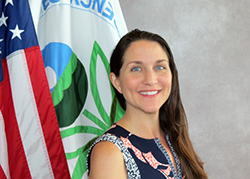 Jean Balent, U.S. EPA Technology Innovation and Field Services Division (balent.jean@epa.gov or 202-566-0832)
Jean Balent, U.S. EPA Technology Innovation and Field Services Division (balent.jean@epa.gov or 202-566-0832)
Ms Balent is on the staff of the EPA's Technology Innovation and Field Services Division where she has worked to collect and disseminate hazardous waste remediation and characterization information since 2003. Ms Balent manages the Clean Up Information Network website and actively supports online communication and collaboration resources available to EPA. She formerly worked with the US Army Corps of Engineers Environmental Engineering Division in the Buffalo District. Ms Balent was also a member of the SUNY-Buffalo Groundwater Research Group where she constructed and tested large scale models of groundwater flow. Ms Balent has also conducted research relating to the Great Lakes, environmental remediation, and brownfields re-development. She holds a Bachelor's degree in environmental engineering from SUNY-Buffalo and a Master's degree in Information Technology from AIU.
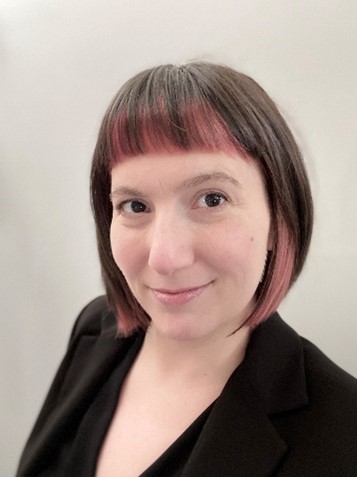 Cindy Frickle, U.S. EPA Office of Superfund Remediation and Technology Innovation (frickle.cynthia@epa.gov or 202-566-0927)
Cindy Frickle, U.S. EPA Office of Superfund Remediation and Technology Innovation (frickle.cynthia@epa.gov or 202-566-0927)
Cindy Frickle is a physical scientist with EPA's Superfund program where she reviews and propagates technical information to site cleanup professionals through Clu-In, EPA forums, and interagency channels. Prior to joining EPA, she spent time characterizing contaminated sites, coring sediments, studying microbes, and teaching. She completed her Biogeology MS and Geology BS in the University of Minnesota's School of Earth Sciences.
Webinar Slides and References:
- Day 2: Fractured Rock 102: Focus on Remediation
 Designing Tracer Tests for Site Characterization and Decision Support at Sites of Groundwater Contamination (Allen Shapiro, USGS)
Designing Tracer Tests for Site Characterization and Decision Support at Sites of Groundwater Contamination (Allen Shapiro, USGS) Characterization of a fractured system - Red Devil Mine (Mark Longtine, ENE)
Characterization of a fractured system - Red Devil Mine (Mark Longtine, ENE) Role of Numerical Modeling in Remedy Selection and remedial performance evaluation (Dan Goode, USGS)
Role of Numerical Modeling in Remedy Selection and remedial performance evaluation (Dan Goode, USGS) Characterization and Treatment of DNAPL Sources in Fractured Rock (Charles Schaefer, CDM Smith)
Characterization and Treatment of DNAPL Sources in Fractured Rock (Charles Schaefer, CDM Smith) Bioaugmentation in Fractured Rocks - Application at Naval Air Warfare Center, NJ (Claire Tiedeman, USGS)
Bioaugmentation in Fractured Rocks - Application at Naval Air Warfare Center, NJ (Claire Tiedeman, USGS) Assessing Abiotic Dechlorination in Rock Matrices (Charles Schaefer, CDM Smith)
Assessing Abiotic Dechlorination in Rock Matrices (Charles Schaefer, CDM Smith) Thermal Remediation in Fractured Rock - A Case Study and What to Look for in a Work Plan (Lauren Soos, TRS Group, Inc.)
Thermal Remediation in Fractured Rock - A Case Study and What to Look for in a Work Plan (Lauren Soos, TRS Group, Inc.) Natural Attenuation in Fractured Rock Aquifers (Allen Shapiro, USGS)
Natural Attenuation in Fractured Rock Aquifers (Allen Shapiro, USGS) Chemical Attenuation in a Fractured Bedrock Aquifer Impacted by Landfill Leachate (Tamzen Macbeth, CDM Smith)
Chemical Attenuation in a Fractured Bedrock Aquifer Impacted by Landfill Leachate (Tamzen Macbeth, CDM Smith) GEF Viewmaster Site, TCE in Columbia River Basalts (Henning Larsen - Oregon DEQ)
GEF Viewmaster Site, TCE in Columbia River Basalts (Henning Larsen - Oregon DEQ)
Webinar Slides and References:
- Day 2: Fractured Rock 102: Focus on Remediation
 Designing Tracer Tests for Site Characterization and Decision Support at Sites of Groundwater Contamination (Allen Shapiro, USGS)
Designing Tracer Tests for Site Characterization and Decision Support at Sites of Groundwater Contamination (Allen Shapiro, USGS) Characterization of a fractured system - Red Devil Mine (Mark Longtine, ENE)
Characterization of a fractured system - Red Devil Mine (Mark Longtine, ENE) Role of Numerical Modeling in Remedy Selection and remedial performance evaluation (Dan Goode, USGS)
Role of Numerical Modeling in Remedy Selection and remedial performance evaluation (Dan Goode, USGS) Characterization and Treatment of DNAPL Sources in Fractured Rock (Charles Schaefer, CDM Smith)
Characterization and Treatment of DNAPL Sources in Fractured Rock (Charles Schaefer, CDM Smith) Bioaugmentation in Fractured Rocks - Application at Naval Air Warfare Center, NJ (Claire Tiedeman, USGS)
Bioaugmentation in Fractured Rocks - Application at Naval Air Warfare Center, NJ (Claire Tiedeman, USGS) Assessing Abiotic Dechlorination in Rock Matrices (Charles Schaefer, CDM Smith)
Assessing Abiotic Dechlorination in Rock Matrices (Charles Schaefer, CDM Smith) Thermal Remediation in Fractured Rock - A Case Study and What to Look for in a Work Plan (Lauren Soos, TRS Group, Inc.)
Thermal Remediation in Fractured Rock - A Case Study and What to Look for in a Work Plan (Lauren Soos, TRS Group, Inc.) Natural Attenuation in Fractured Rock Aquifers (Allen Shapiro, USGS)
Natural Attenuation in Fractured Rock Aquifers (Allen Shapiro, USGS) Chemical Attenuation in a Fractured Bedrock Aquifer Impacted by Landfill Leachate (Tamzen Macbeth, CDM Smith)
Chemical Attenuation in a Fractured Bedrock Aquifer Impacted by Landfill Leachate (Tamzen Macbeth, CDM Smith) GEF Viewmaster Site, TCE in Columbia River Basalts (Henning Larsen - Oregon DEQ)
GEF Viewmaster Site, TCE in Columbia River Basalts (Henning Larsen - Oregon DEQ)
Additional Resources:
If you have a suggested topic or idea for a future CLU-IN internet seminar, please contact:
Technology Integration and Information Branch
PH: 202-566-0832 | Email: balent.jean@epa.gov
Technology Integration and Information Branch
PH: 202-566-0875 | Email: adam.michael@epa.gov





